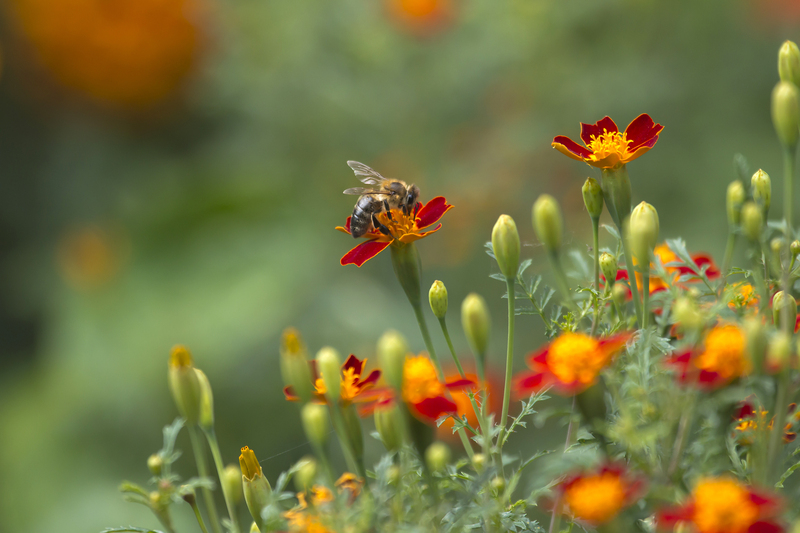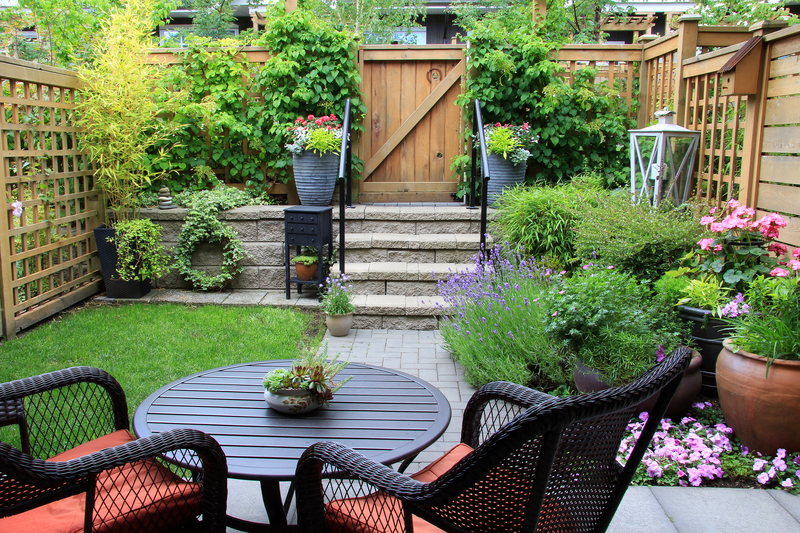Vertical Gardening: Growing Up, Not Out
Posted on 10/09/2025
Vertical Gardening: Growing Up, Not Out
Looking for ways to boost your garden's yield without expanding your footprint? Vertical gardening might just be the perfect solution. As urban spaces shrink and our desire for greenery grows, more gardeners are discovering the advantages of cultivating vertical gardens. This innovative approach to growing plants upward rather than outward maximizes available space, boosts aesthetics, and offers unique opportunities for both novice and expert gardeners alike.
What is Vertical Gardening?
At its core, vertical gardening refers to the practice of growing plants on upright surfaces, such as trellises, walls, and stacked planters, rather than the traditional, horizontal ground-based beds. It's an efficient, creative, and often beautiful method for utilizing limited space, particularly in urban environments where space is at a premium.
The Rise of Vertical Gardens
With more people moving to cities and yard sizes shrinking, the concept of growing "up, not out" has soared in popularity. This method isn't just for those with small spaces; it's utilized in everything from residential homes to high-rise office buildings and even public spaces. Notably, many modern architects and designers integrate vertical greenery into their projects, for both aesthetic and environmental benefits.

Why Choose Vertical Gardening?
Whether you have a balcony, a tiny backyard, or simply want to enhance your indoor spaces, vertical gardens offer a range of compelling benefits:
- Maximizes Small Spaces - Turn walls, fences, and railings into lush, productive gardens.
- Improved Aesthetics - Vertical plantings create stunning, natural art installations, indoors or out.
- Increases Yield - Grow more plants in less ground area, making it perfect for vegetables, herbs, and flowers.
- Enhances Air Quality - Vertical greenery helps reduce urban air pollution and improves indoor environments.
- Reduces Pest Problems - Keeping plants off the ground can lower the risk of soil-borne pests and diseases.
- Promotes Better Health - Tending a vertical garden can improve mental well-being and encourage homegrown harvests.
- Water Efficiency - Many systems recycle water, using less overall and reducing waste.
Types of Vertical Gardening Systems
Vertical gardening isn't a one-size-fits-all method. There are numerous approaches, each tailored to your space, budget, and growing goals. Explore these vertical gardening ideas to find your perfect match:
1. Trellises and Cages
Trellises are classic tools for growing climbers such as beans, peas, squashes, and even some flowers like morning glories. Garden cages, often used for tomatoes, provide stability and support for tall or sprawling plants. These are among the simplest and most cost-effective ways to embrace vertical vegetable gardening.
2. Wall-Mounted Planters
These specially designed planters attach directly to walls or fences, creating a living green tapestry. They can be made from plastic, metal, felt pockets, or even repurposed materials like pallets and shoe organizers. Wall-mounted planters are particularly useful for herbs, lettuces, and shallow-rooted flowers.
3. Vertical Garden Towers
Tower systems stack planters or pockets on top of one another, often allowing for 360-degree planting around the structure. Many commercial versions come with integrated irrigation, making watering effortless. DIY enthusiasts can also create their own using stacked pots, PVC, or recycled containers.
4. Living Walls (Green Walls)
The ultimate in vertical garden design, living walls are engineered panels completely covered in plants. Popular in commercial and public buildings, living walls are also achievable at home for those willing to invest a bit more time and resources. They're stunning, improve air quality, and make a bold eco-statement.
5. Hanging Gardens
Employing hanging baskets, pots, and even upside-down planters, hanging gardens are ideal for balconies, patios, and tiny indoor spaces. They provide flexibility, as you can rearrange or swap out plants as desired.
Best Plants for Vertical Gardening
Not all plants are suited for growing upwards, but many thrive in vertical settings. Choosing the right species ensures lush, productive growth. Below are top choices for various vertical gardening systems:
- Vining Vegetables: Cucumbers, beans, peas, squash, tomatoes
- Leafy Greens: Lettuce, spinach, Swiss chard, kale
- Herbs: Basil, parsley, mint, oregano, thyme
- Small Fruits: Strawberries, dwarf tomatoes, nasturtiums (also edible and decorative)
- Ornamental Plants: Ferns, succulents, ivy, philodendrons, petunias
*Tip: Select species that have compact root systems and can thrive in the smaller soil volumes typical of vertical arrangements.*
How to Start a Vertical Garden: Step-by-Step Guide
Getting started with vertical gardening can be as simple or as sophisticated as you like. Follow these steps to launch your thriving, space-saving garden:
Step 1: Choose Your Location
Evaluate available spaces--balconies, fences, walls, or posts--that receive at least 4-6 hours of sunlight daily (for most vegetables and flowers). Indoors, south-facing windows are ideal. Consider microclimates and avoid areas with strong wind exposure.
Step 2: Select Your System
Match your vertical gardening system (trellis, wall planter, tower, etc.) to your space, budget, and desired crop types. For renters or those seeking flexibility, go for movable towers or hanging baskets.
Step 3: Prepare the Structure
Install supports firmly to handle the weight of mature, watered plants. If using wall-mounted systems, check the integrity of your surfaces and use proper anchors. For DIY projects, upcycle materials like wood pallets, old ladders, or plastic bottles.
Step 4: Choose Quality Soil and Fertilizer
Vertical gardens dry out faster than in-ground beds, so use a high-quality, lightweight potting mix that retains moisture but drains well. Supplement with slow-release organic fertilizers to keep nutrient levels steady.
Step 5: Select and Position Plants
Plant more sun-loving, drought-tolerant species at the top, where conditions are hottest. Reserve lower levels for shade-tolerant or moisture-loving varieties. Consider staggered heights for visual interest and to optimize light for all.
Step 6: Watering and Maintenance
Install a drip irrigation system for larger living walls, or water smaller installations regularly. Watch for signs of dryness, especially in hot weather. Prune and harvest frequently to encourage new growth, and monitor for pests.
Tips and Tricks for Vertical Gardening Success
- Plan for Weight: Wet soil and mature plants can be heavy. Secure your system properly, especially when mounting to walls or fences.
- Watch Water Flow: In tall systems, water can drain quickly. Install catch trays or drip systems to retain and recycle moisture.
- Rotate and Refresh: Replant different species each season to maintain soil fertility and interest. Many vertical gardens can be easily replanted or modular in design.
- Pest Control: Check behind panels and in crevices for pests, and use companion planting (e.g., marigolds with vegetables) to deter unwanted insects.
- Start Small: If you're new to vertical gardening, begin with a modest setup like a hanging planter or a small trellis, then expand as your confidence and skills grow.
Inspiring Vertical Gardening Ideas
- Pallet Gardens: Recycle old wooden pallets by filling them with soil and tucking herbs or flowers between the slats for a rustic, wall-mounted garden.
- Shoe Organizer Planters: Hang a canvas shoe organizer on a sunny fence, fill the pockets with potting mix, and plant strawberries, lettuce, or herbs.
- Lattice Veggie Wall: Attach a simple lattice structure to a wall and let climbing beans or peas create a living privacy screen.
- Gutter Gardens: Mount sections of rain gutter horizontally to a wall; fill each "tier" with shallow-rooted greens or edible flowers.
- Indoor Living Walls: Use felt or modular plastic panels to cover an interior wall, transforming your room with a lush, oxygen-producing backdrop.
Eco-Friendly Benefits of Vertical Gardening
Beyond their visual appeal and productivity, vertical gardens support the environment in remarkable ways:
- Reduces Urban Heat: Green walls lower ambient temperatures and help combat the urban heat island effect.
- Improves Air Quality: Plants filter out pollutants and convert carbon dioxide into oxygen, making both indoor and outdoor spaces healthier.
- Conserves Water: Many vertical garden systems use efficient irrigation and catchment, minimizing waste.
- Promotes Biodiversity: Attracts beneficial insects, pollinators, and even small birds to urban spaces that otherwise lack green habitats.
- Insulation and Noise Reduction: Living walls can insulate buildings, reduce energy costs, and block unwanted noise.
Common Challenges and How to Overcome Them
Every style of gardening has its hurdles, but with a bit of knowledge, you can sidestep the pitfalls of vertical gardening:
- Drying Out: Vertical garden soil dries faster. Counteract with moisture-retentive soils and frequent monitoring. Mulching also helps retain moisture.
- Nutrient Shortages: Smaller soil volumes can leach nutrients quickly. Use high-quality fertilizers and replenish soil annually.
- Structural Issues: Secure supports properly and avoid overloading with heavy soil or water.
- Pests: While fewer ground-borne pests, some insects love tight plantings. Inspect regularly and act early.
- Plant Selection: Not every plant adapts well. Test and observe, focusing on species known to thrive vertically.

Frequently Asked Questions: Vertical Gardening
Can you grow vegetables in a vertical garden?
Absolutely! Many veggies--including tomatoes, beans, peas, cucumbers, and leafy greens--excel in vertical setups. Just ensure they have proper support and adequate water.
Is vertical gardening expensive?
Vertical gardens can be as affordable or as lavish as you make them. Simple DIY projects use recycled materials and basic tools, while living wall systems can run higher but offer professional aesthetics and functionality.
Do vertical gardens need special soil?
Use a lightweight, nutrient-rich potting mix that drains well yet holds moisture. Potting mixes with peat, perlite, and compost are ideal for vertical planters.
Are vertical gardens high maintenance?
With good planning, they require no more maintenance than regular container gardens. Automatic irrigation can help for larger installations.
Conclusion: Embrace the Future with Vertical Gardening
Vertical gardening represents a bold step forward for anyone wanting to make the most of their space while enjoying the countless benefits of lush, abundant growth. Growing up, not out, is as much a metaphor for sustainable urban living as it is a practical gardening solution. With myriad designs, plant choices, and environmental advantages, there's an approach for every home, budget, and gardening dream.
So whether you're decorating a tiny apartment balcony or aiming to cover a blank backyard wall in edible plants, now is the perfect time to experiment with vertical gardens. With a little imagination, even the smallest corner can be transformed into a thriving, living masterpiece--proving once again that bigger isn't always better. Sometimes, it's all about growing up.

